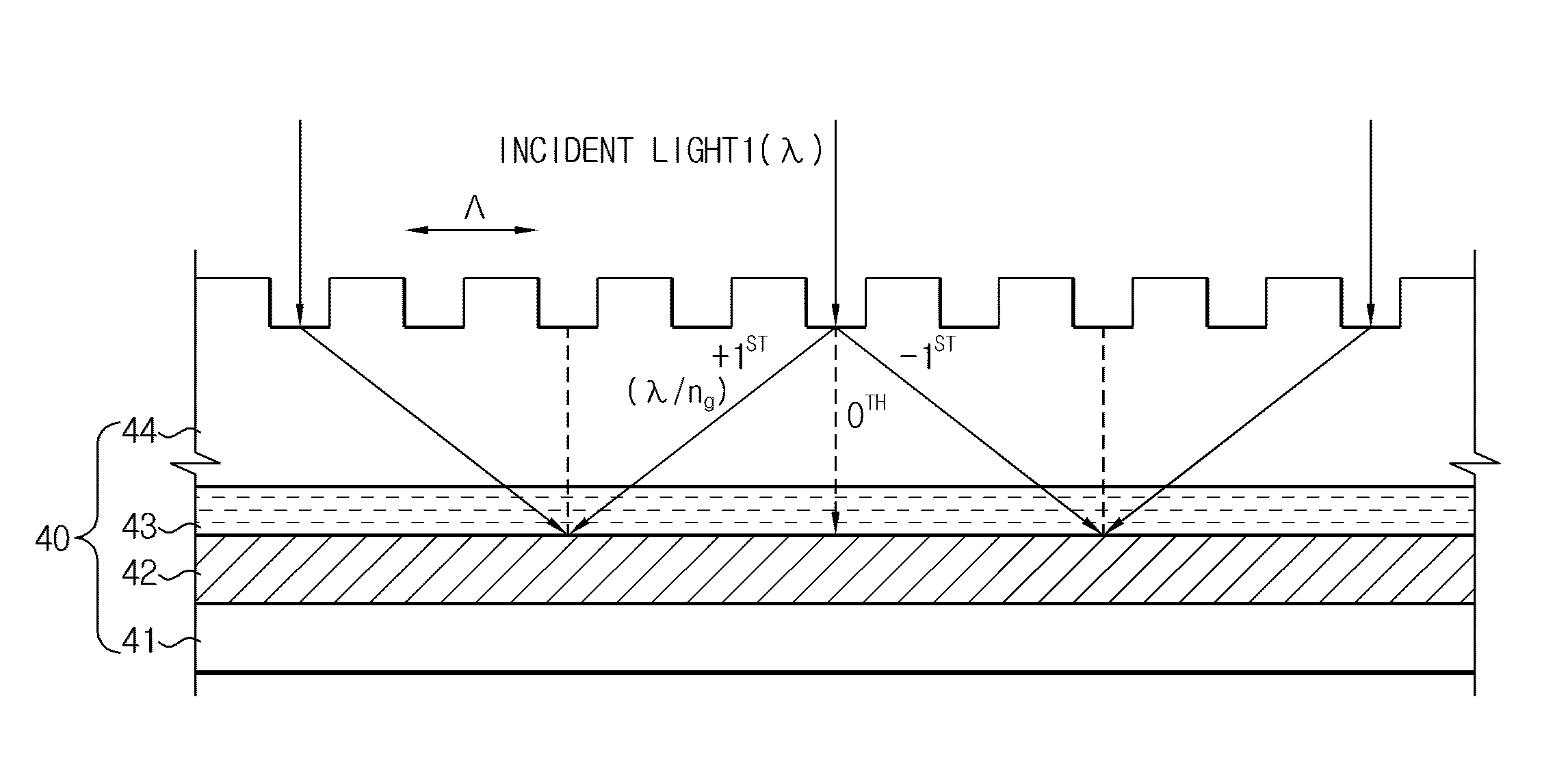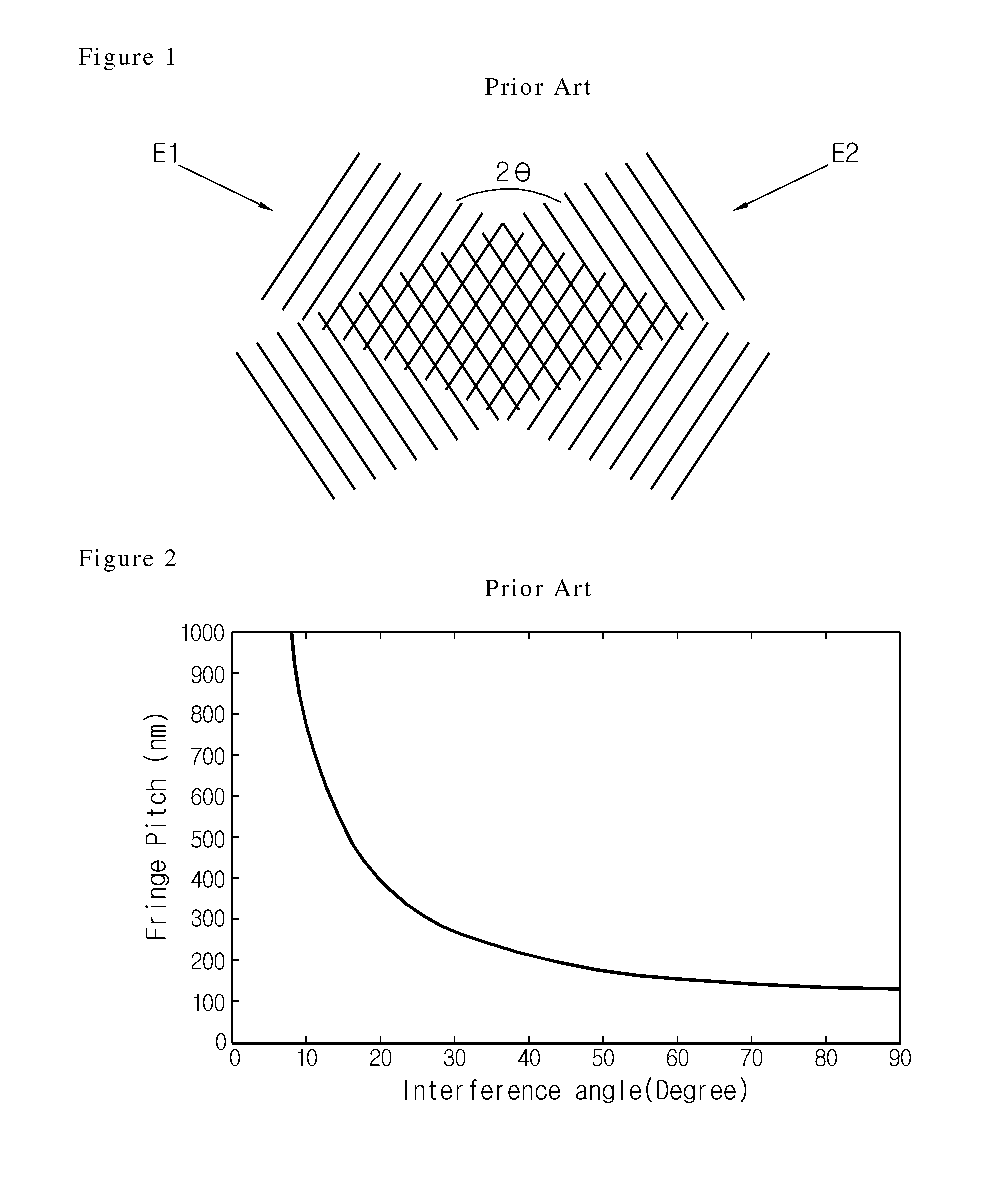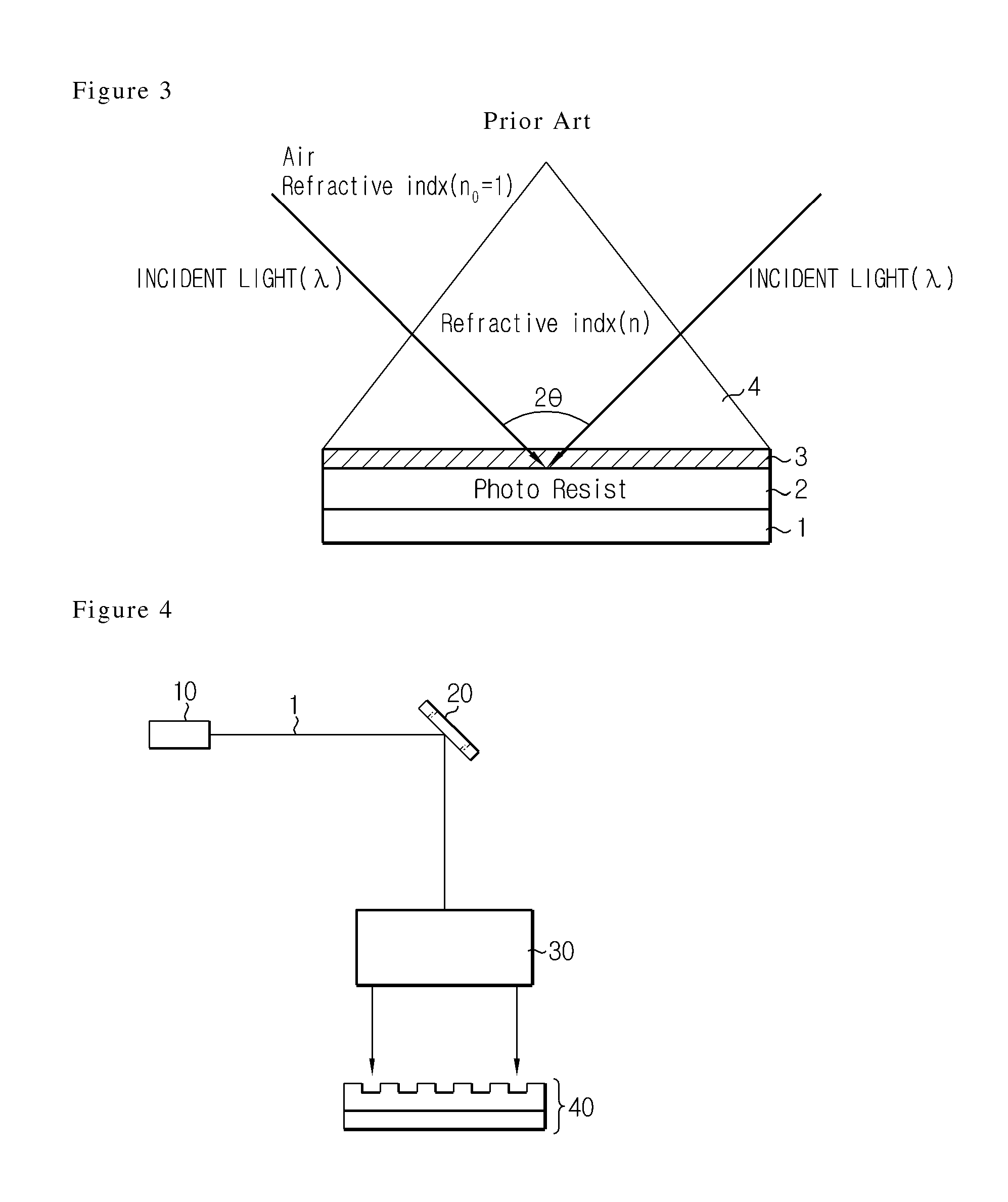Method for laser interference lithography using diffraction grating
a laser interference lithography and diffraction grating technology, applied in the direction of microlithography exposure apparatus, instruments, photomechanical treatment, etc., can solve the problems of substantial inability to realize, destructive interference, and construction interference, and achieve the effect of simplifying the optical system, high resolution, and low coheren
- Summary
- Abstract
- Description
- Claims
- Application Information
AI Technical Summary
Benefits of technology
Problems solved by technology
Method used
Image
Examples
Embodiment Construction
[0070]Hereinafter, the present invention is explained in more detail using an experimental example. However, the following experimental example is for illustration purpose only, not intended to limit the scope of the present invention.
[0071]In this experimental example, a diffraction grating was prepared with the same configuration as the diffraction grating shown in FIG. 6. First, a glass substrate was prepared, and a BARC was formed on an upper surface of the glass substrate. Also, a repeated grating pattern was formed on the glass substrate with the BARC by means of photoresist. The repeated grating pattern of the diffraction grating shown in FIG. 6 was formed by etching of SiO2. Meanwhile, in this experimental example, a photoresist material having low durability but not giving serious problem in actual optical features was used to form the grating pattern.
[0072]FIG. 7 is a photograph showing the diffraction grating prepared suitably for the conditions proposed in this experimen...
PUM
| Property | Measurement | Unit |
|---|---|---|
| interference angle | aaaaa | aaaaa |
| refractive index | aaaaa | aaaaa |
| wavelength | aaaaa | aaaaa |
Abstract
Description
Claims
Application Information
 Login to View More
Login to View More - R&D
- Intellectual Property
- Life Sciences
- Materials
- Tech Scout
- Unparalleled Data Quality
- Higher Quality Content
- 60% Fewer Hallucinations
Browse by: Latest US Patents, China's latest patents, Technical Efficacy Thesaurus, Application Domain, Technology Topic, Popular Technical Reports.
© 2025 PatSnap. All rights reserved.Legal|Privacy policy|Modern Slavery Act Transparency Statement|Sitemap|About US| Contact US: help@patsnap.com



